It is the flowering of orchids that makes you choose and buy them. Bright, colorful, like butterflies elegant, with a pleasant aroma they attract the eyes of people. Such an unusual appearance, shape and color of the plant was invented by nature, to attract pollinating insects. To multiply and live in the wild, while forming new hybrids. The most beloved and beautifully blooming orchids are called Phalaenopsis and Cattleya. All epiphytic plants are centenarians. The age of many species approaches 100 years. So, long-term flowering of orchids at home is possible. To do this, amateurs spend their strength and patiently care for the plant.
Content
How to understand when orchids should bloom
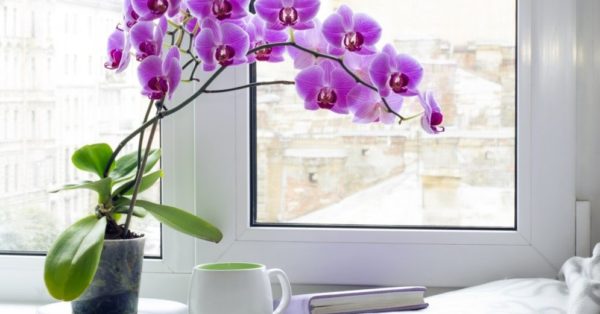
There is no single answer to the question of when and how often an orchid blooms at home. It all depends on the person growing the flowers. There are several points that you should pay attention to understand when it will bloom:
- the age of orchids is at least 1.5-4 years, and seedlings from 4 years;
- the number of shoots is from 5 to 8 pieces.
Several times a year, an orchid blooms in a good "climate" in the house and depending on the type of plant. The process itself can begin at any time and last several months, over several years. For example, the Phalaenopsis orchid blooms at home all year round.
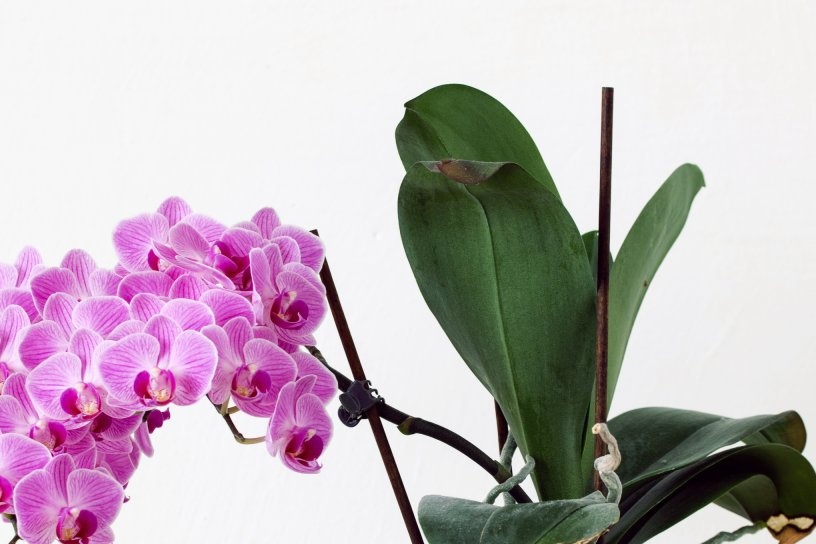 You may be interested in:
You may be interested in:Process Features and Prerequisites
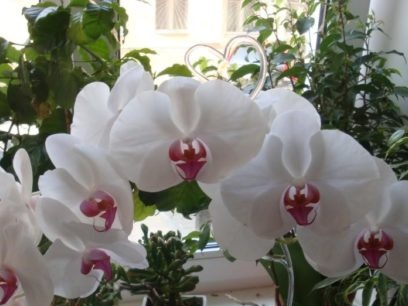
Any plant needs attention. Calm adaptation to one place is important for the growth and development of orchids at home. Florists are advised to be careful and use a limited amount of fertilizer. Too many mineral salts trigger dropping of flowers and damage to the roots. Recovery will be delayed for 6 months. Heat (high temperature) is a sign of drought, which the plant perceives as a signal to "fall asleep." Not even artificial light will help. You can not feed the orchid in its first flowering after the store.
Orchids bloom at home for longer while maintaining a favorable “climate”. There are rules for this. For example, you should not move the container with them from place to place, and you need to maintain the position (side of the flower) relative to the lighting. Provide a 12-hour day. To help, artificial lighting, when there is not enough sun, in the fall, in the winter.
In nature, day replaces night, changing air temperature. And at home, it is better to arrange a daily difference of 4-8 degrees. Where the night weather is cooler. In the afternoon, withstand temperatures of 20-24 degrees. In summer or spring, balconies (loggias) help. Plus an influx of fresh air (or airing) without drafts. Together with that:
- Watering is carried out as the soil mixture dries. After flowering, reduced to 1 time per month.This is a common condition for plants, since in the natural environment after flowering you need to spray the seeds. And maybe it's in dry weather.
- Since epiphytic orchids “drink” water from the air, rain and fog - regulate humidity (from 60%). To prevent stunting, and to prevent the flowers and buds from drying out: spray, turn on moisturizers, put on a tray with water and pebbles.
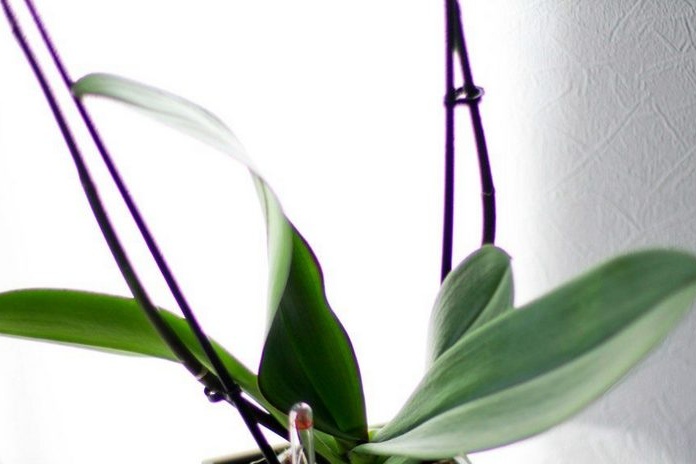 You may be interested in:
You may be interested in:During the flowering period, use only phosphate and potassium fertilizers for feeding, and at rest, nitrogen fertilizers.
It is necessary to arrange a “shake-up” if the orchids do not bloom at all. Perhaps she is very well, and instead of beautiful flowers, greenery is actively growing.
How many times a year and how long the orchid blooms
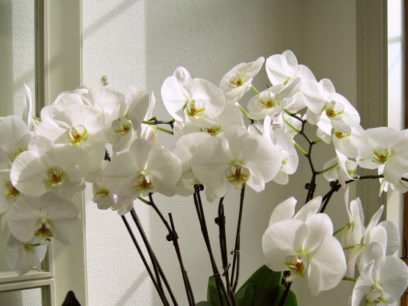
Orchid blooms at home 2-3 times a year. It depends on how mature she is, healthy and strong, also of what kind and what kind of “weather” conditions are created for her. Long-flowering (6-8 months) - phalaenopsis. The average speed for the rest of the plants is 2-3 months (single flower 3-4 weeks). Wilted inflorescences replace newly formed ones. The orchid and its flowering, with proper care, have been pleasing to the owners for decades. Whereas with negligent lovers dies, or lives no more than 5 years. In some situations, the flowering time of orchids may change (shorten):
- bloomed for a long time in the store (artificially stimulated);
- started fertilizing early;
- hot in the room;
- "Flooded."
Orchids bloom at home or “relax,” there may be several such stages in a year. The emergence of new shoots and the development of roots, the growth of the peduncle and the formation of new buds are called the growing season. Following it, the most active stage - the orchid begins to bloom. After which, "rest" sets in, the plant gains strength, building up the root system and greenery.
Is it possible to artificially stimulate
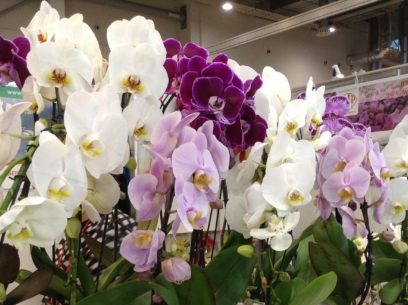
It is safe to subject artificial stimulation to healthy, adult and rested plants (that is, except for young, weakened, and those that have recently bloomed). Fits:
- Temperature drop. From the beginning of spring (when the air temperature is 16-18 degrees) to early autumn. At night, transfer the flower to the garden or put it on the balcony (at the open window). In the afternoon, return home to solar heat. Duration 2 weeks. Enough for the development of roots and peduncles. In the fall, the air outside is cold, so you can get by airing (without a draft).
- "Arid weather." Preferred for phalaenopsis, since it does not need "rest". Double the interval between watering, do not even spray, no fertilizer and a hot shower. There was a peduncle - to return to normal watering mode. If this is the autumn-winter period, then add artificial light for the peduncle.
In some situations, feeding "Bud", "Ovary", spraying in the morning with "Epin" and others will help. It is not bad to pour water with succinic acid for 3 days (2 grams per 2 liters). Or a hot shower, as an emergency measure, with water of 45 degrees for 10 seconds after 20 minutes several times. The plant, defending itself, will begin to start a peduncle.
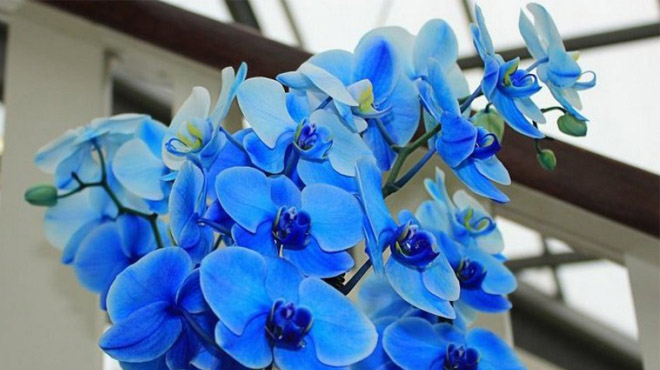 You may be interested in:
You may be interested in:How it begins to bloom and when to wait for repeated flowering
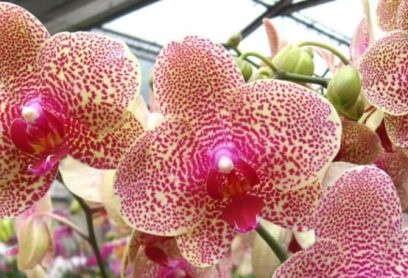
In which of the time periods the orchid blooms at home, we recognize by the appearance of the peduncle (the main thing is not to confuse with the roots). It grows from a sleeping bud, located between the leaves (in the sinuses) on the stem. Stretching, the top of the peduncle is covered with bulbs. They, in turn, develop into buds.Flowering begins. The most extreme smoothly open the upper and side petals. Next comes the lip and the whole flower. The process takes 1 day.
Strong and healthy plants, with a large number of shoots, bloom from 2 times a year. Subject to the regime of irrigation, top dressing and proper care. While the peduncle is alive (not dry) - it blooms. Weakened, transplanted, after illness or relocation, young orchids cannot be stimulated to re-bloom, so as not to deplete them. Need a rest for a set of greens, juices. The rush in this business is death for orchids. Having recovered, it will bloom again (for phalaenopsis the usual time is from late autumn to early spring).
Orchid care during and after flowering
Orchids often bloom for a long time, depending on the conditions during and after flowering. It is important to observe and understand the rules. Feed with phosphate and potassium fertilizers, and at rest - with nitrogen (so as not to slow down the development of the kidneys). Moisten with spray guns and appliances. Spray aerial roots and peduncles. Without "pouring", it is necessary to water the roots abundantly 2 times a week, when the plant blooms, reducing it to 1 time per month after. Monitor humidity levels and air circulation.
The orchid should be transplanted when it has dropped its petals or if it has "grown" out of a pot, protruding roots will indicate this. Pruning after flowering is necessary for dried peduncles. Spend it above the kidney 5-6 mm sterile secateurs.
Patience and work, attention and love - this is all that is required for orchids during flowering. They will repay their lush and long flowering.

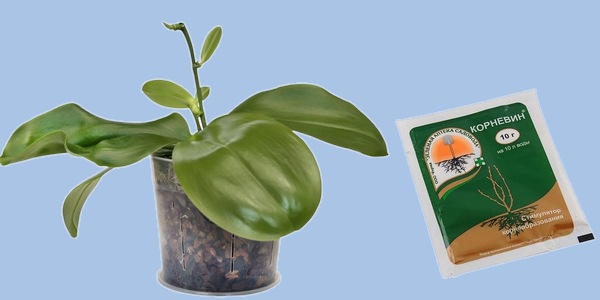
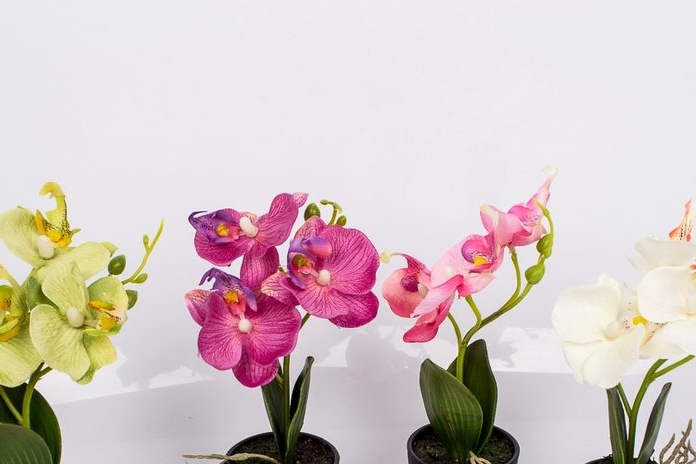
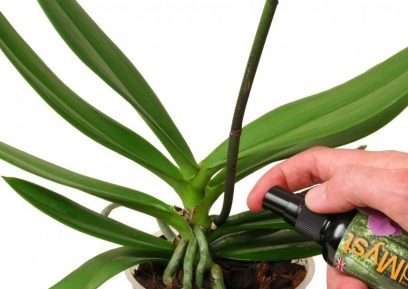
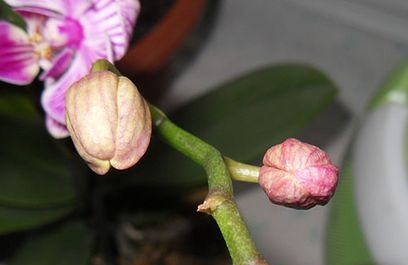 Reasons why orchids fall flowers and what to do
Reasons why orchids fall flowers and what to do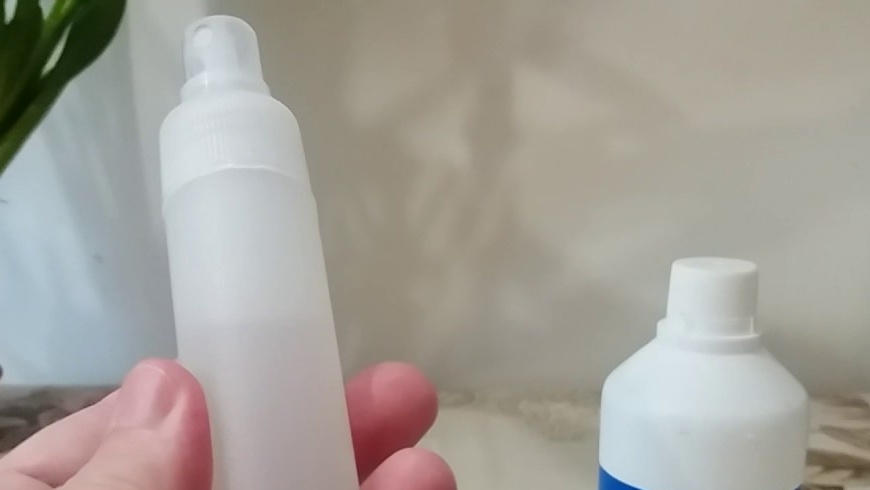 How to use hydrogen peroxide for orchids and why
How to use hydrogen peroxide for orchids and why Midges are wound up in the orchid: effective ways to get rid
Midges are wound up in the orchid: effective ways to get rid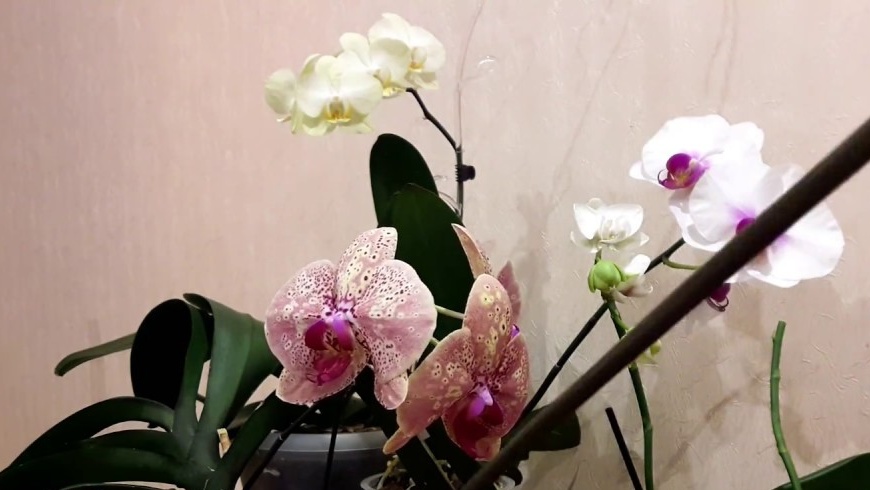 Is it possible to transplant an orchid during flowering
Is it possible to transplant an orchid during flowering